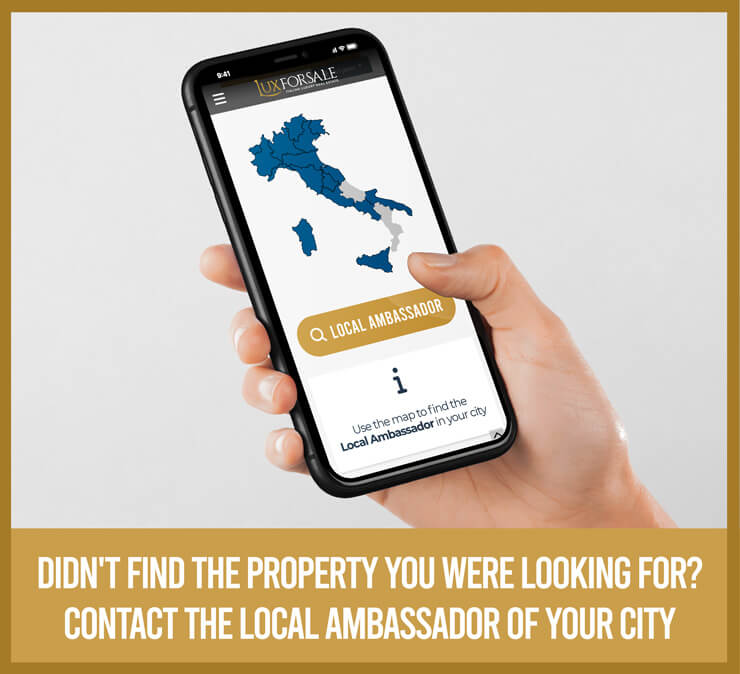Those who called it "the Florence of the South" were certainly not wrong. Lecce is one of the southern cities richest in history and monuments, which every year attracts tourists from all over the world for its architectural beauties and suggestive local traditions.
Lecce is the cradle of the Baroque, and in fact it is full of churches and palaces inspired by this architectural style: getting to know every corner of this splendid city of Puglia is a real pleasure not only for those who know art, but also for those attracted by Beauty in all its forms.
One thing is certain: Lecce is not just a summer destination (like many others in Puglia), but a 360 ° city of art, to be discovered and experienced in its various facets.
There is no shortage, in Lecce and its surroundings, of housing solutions suitable for those who want to stay in this area continuously, for personal or professional reasons. The luxury homes in Lecce are located both in the city center, in the suburbs or in the surrounding countryside. These are mostly renovated villas or old farmhouses, but there are also period buildings for sale, belonging to local noble families.
There are several agencies that publish properties on Luxforsale, but there is also a Luxforsale certified agency in Lecce.
To have valid support and effective guidance in choosing a luxury property, the "Temiño Premium Properties" is available, a real estate agency located in the heart of the city of Lecce, specializing in the sale of properties that tell the story of Puglia.
“Today Puglia, in particular Salento, the heel of Italy, is known throughout Europe and much of the world, and is much loved. Customers are fascinated by this territory, for the delightful colors of its seas, the scents of the countryside, the elegance and baroque style of the City of Lecce ... Salento is loved for its simplicity, it is definitely a genuine territory that captures you ”, Declared the Broker Manager of the Luxforsale certified agency for Lecce and Brindisi, Ing.Pedro Ruiz de Temiño Bueno.
Notes on the city of Lecce
Wandering through the streets of Lecce, you will find traces and evidence of the Roman, medieval and Renaissance periods. To enter the most evocative area, the Old Town, you cross Porta Napoli, built in 1548 in honor of King Charles V. From here the most important and interesting streets branch off, where you can admire most of the historic buildings, churches in Baroque style and craft shops. In fact, two of the most beautiful churches in Lecce are erected right in the heart of the historic center: the Church of Santa Maria della Provvidenza and that of Santa Maria di Costantinopoli.
The sixteenth-century Palazzo Adorno and the Basilica of Santa Croce are considered true symbols of the city and of the Lecce Baroque.
The central nucleus of the city is formed by the renowned Piazza di Sant'Oronzo, and by the Piazza del Duomo with the majestic bell tower, the Palazzo del Vescovado and that of the Seminary, dating back to 1700. For a pleasant break in nature it is worth visiting the Villa Municipal, named after Giuseppe Garibaldi.
Piazza Sant’Oronzo, the main square of the city, is dedicated to the Patron Saint. Popular legend tells that, while the plague raged throughout the Kingdom of Naples, Lecce was saved thanks to the intervention of Oronzo, at the time the proto-bishop. As a sign of thanks, the inhabitants erected a votive column on which the statue of the saint was placed.
The Cathedral of Lecce is an extraordinary example of religious architecture. Initially dedicated to Our Lady of the Assumption, the Cathedral was then completely rebuilt by the architect Giuseppe Zimbalo. The Cathedral was built with two entrances: the main one facing the Bishop's Palace, and the one on the left side, which turns towards the entrance to the square. The interior of the Cathedral contains valuable canvases, fine stuccoes and twelve altars.
The amphitheater and the theater, on the other hand, represent the most important historical relics of the Roman era. The first, built in the 2nd century AD, could accommodate up to 20,000 spectators. Not far from this, stands the Roman Theater, dating back to the same historical period. Discovered by chance in 1929, it is still visible in its original structure.
Another monument to visit in Lecce is the Castle, which King Charles V had built in the city in 1539. If in the past it served as a defense of the territory (as was the case for all similar fortresses built in Southern Italy), it is currently the seat of the 'Department of Culture of the Municipality of Lecce.
Those who are particularly interested in learning about the Lecce Baroque in its highest forms, should instead visit the Basilica of Santa Croce with the adjoining Celestini Convent (today the Government Palace).

 Italiano
Italiano  Français
Français  Español
Español  Deutsch
Deutsch  Português
Português 
